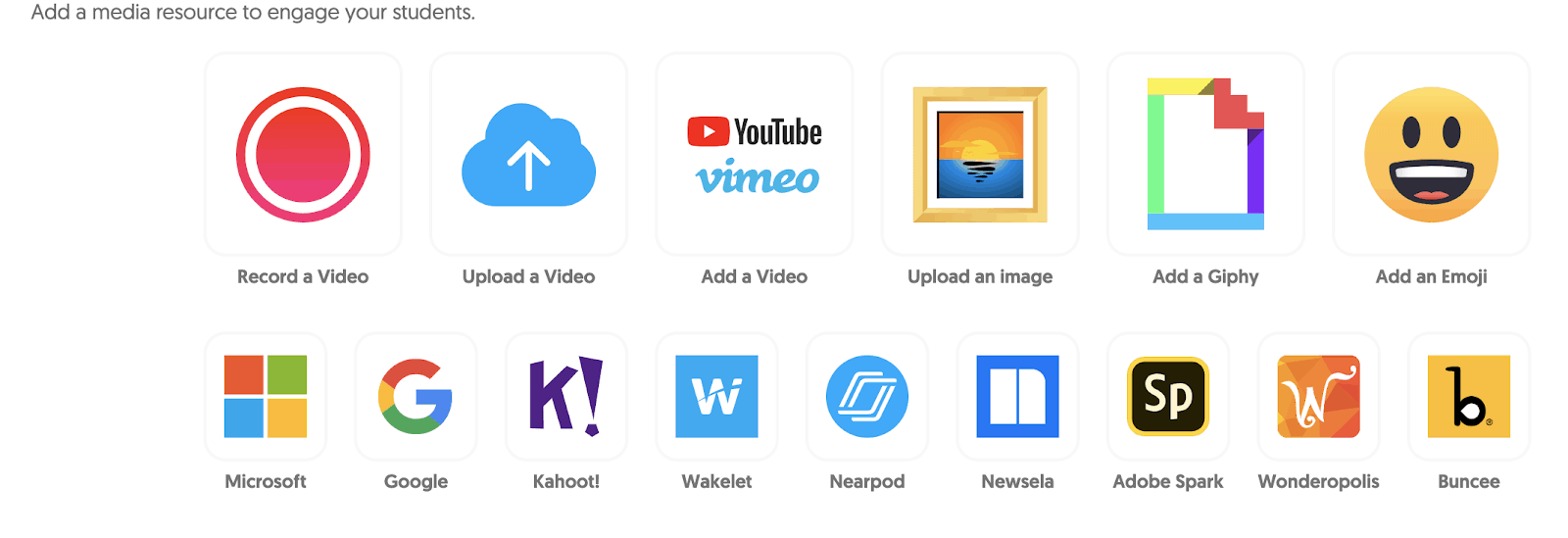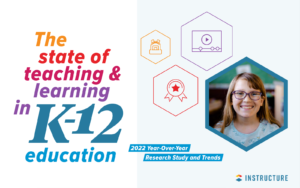Choosing the Right Tools for Remote Learning

Over the past several weeks, there has been a flood of information and resources related to Coronavirus and preparing for remote learning shared in many learning communities. Whether you follow the #remotelearning hashtag on Twitter, join one of the Facebook educator groups focused on school closures, or engage in discussion within the ISTE community or other professional learning network (PLN), you will without a doubt find more than you need. The amount of support available from the many ways educators are coming together to create and share content has been inspiring to see and it provides some comfort during this very difficult and unprecedented time in the world.
However, even for educators who have been teaching online or are more experienced with implementing digital tools in the classroom, it can be overwhelming to sort through all of these resources. For parents and families, who now have added responsibilities and demands, supporting their learners at home can definitely be a big shift. Fortunately, there are organizations like PBS, CommonSense Media, and the National Association of School Psychologists (NASP), that have provided some guidance for families. As educators, what can we do to help families and students prepare for remote learning during this critical time?
It is helpful to have guidance for specific tools or learning materials that have wide applicability to different grade levels and content areas that do not have a steep learning curve. An added benefit is resources that provide ready-made lessons or templates for teachers to use and that can engage families in learning together at home. Here are some digital tools for planning meaningful learning activities for students that provide opportunities for families to engage in learning too.
Games
Using digital tools for game-based learning enables students to select activities to meet their specific needs and interests while giving educators access to data to adjust lessons accordingly. These tools are also great options for families looking for different activities to pass the time together. Some of the options are:
- Gimkit. Choose from the many games or “kits” available or create one quickly by uploading terms, searching their question bank or importing flashcards from another site. There are multiple ways to play and Gimkit does not require that questions be projected onto one screen, questions appear on student devices.
- Kahoot! Educators have free access to Premium Kahoot! and can choose from thousands of games in the library that can be shared as self-paced kahoots for remote learning. Families can also use Kahoot! for some fun games with trivia, current events, or anything! A good activity could be to create a family Kahoot!
- Quizizz. Another game-based learning tool that offers an extensive library of games to choose from. Making a new game is easy by searching the question banks available. Games can be assigned using a code or sent through a messaging app such as Remind or students can choose their own game for solo practice. Quizizz can be another option for family game night!
- Quizlet. A study tool with activities and games for students to build their skills in any subject. Keep up with their blog for ideas of how to get started with Quizlet. There are thousands of flashcard sets available and Quizlet Live! can be played without need for a projector, unlike some of the other game-based learning tools. Use Quizlet with students or for family time.
- Educandy. A fun website that offers eight different activity options for practicing vocabulary words. Choose from multiple choice, anagrams, word searches and more. Try out some of their example games to practice capitals or the elements, or quickly make your own. Share the code with students for them to play on their own device. Educandy offers an animated fun way to learn for all ages!
Interactive Lessons
There are several tools for sharing multimedia content and creating interactive lessons to engage students more in learning during this time. Getting started with any of these options does not take much more than creating an account and finding a lesson or activity to get started with.
- Nearpod. Using some of the featured lessons available in the Ready to Go At Home Lessons, teachers and families can find options for keeping students engaged in more meaningful learning and on current topics. It is also fun to explore the virtual reality field trips together and travel the world right from home.

- Pear Deck. With Pear Deck, educators and families can explore the remote learning resources available to get started quickly. Paired with Newsela, Daily Decks are ready to teach lessons that include articles and interactive prompts for students.
- Google Tour Creator. Take students on a field trip while learning from home. Teachers can create a VR tour, have students create their own, or explore some of the templates available in the platform. An easy way to add-in virtual reality to immerse students in learning.
- BrainPop. An animated educational website now offering free access to all of their lessons. More than 1,000 videos and activities on a variety of topics for students in grades K through 12. Students can work through the lessons at their own pace and teachers can provide feedback right within BrainPop.
Storytelling
There are many ways that students can show learning and as we are helping to prepare students for the future, technology does and will clearly continue to play a role. It benefits students and ourselves to provide a variety of opportunities for them to explore and create in different formats. The benefit of these options is that families can join in the learning and creating together. And each student can create based on their interests because of the many choices available within.
- Flipgrid. Families can find some good examples of how to use Flipgrid for learning together and for connecting with others from around the world during this time to share experiences. Flipgrid is a social learning network where students and educators can record videos, post reflections, ask questions and choose from more than 10,000 ready-to-launch topics. You can even have a Flipgrid inbox for students to record questions privately to you. Teachers can also add content to extend learning using additional tools such as Adobe Spark, Buncee, Nearpod, Newsela, Wakelet, and Wonderopolis.

- Buncee. A multimedia creation tool that enables teachers to set up classes, share assignments, provide feedback and send updates and newsletters. A Parent Newsletters idea shared by Laurie Guyon includes many activities for learning and there are some quick ideas for getting started with students. Educators can create interactive lessons, communicate class updates, share digital activities instantly with students. Students can choose from more than 31,000 stickers, animations and graphics and record audio or add a video to their presentation.
- StoryboardThat. A web-based tool for digital storytelling that is offering free accounts through the end of the year for teachers. Explore some ideas on the StoryboardThat blog and then get started with graphic organizers, lesson plans and easy to use templates. Students can choose a theme, characters, props and more as they create their storyboard, which can be downloaded as a slideshow or even a GIF.

Daily Activities and Connecting
Parents and educators are eagerly looking for ideas for remote learning and home activities. One of the best resources I came across recently was a list of activities for many different topics, age groups and roles in education. Using the Glide.app, Lynne Herr created a COVID-19 list “Global Support: By Educators for Educators” that includes resources and links to an unbelievable amount of topics and content. There is something here for everyone. Check out these engaging resources that students and families will enjoy together:
- Explore Live Cams. Learn about animals, places, climate and more by watching the live feed from locations around the world. Each location also includes weather information, related facts, Q&A and maps. You can also take a snapshot while viewing the live feed. The site includes a playlist of short films and documentaries on a variety of topics.
- NASA. Check out and download more than 140,000 photos and resources from their library. It is easy to search for audio, video or photos and provides a more authentic way to learn about space.
- Daily read-alouds. Different authors from around the world have signed up to do read-alouds each day. Pernille Ripp, the creator of the Global Read Aloud, recently wrote a blog post that included a long list of read-alouds available for educators and families. Check out Storyline Online for videos of books being read with activities.
- Virtual 360 tours. A list of tours compiled by Claudio Zavala and shared on Twitter. A great way to take field trips during this remote learning time.
- Scholastic. To help with remote learning at home, Scholastic launched a website that provides daily lessons for students in grades PreK and up. There are currently five days of lessons available with 15 more lessons on the way.
- Crash Courses. Choose from 15 different courses that offer videos on a range of topics for high school and college courses. Each course includes more than 30 subtopics with videos and content provided for each.
- Livestream activities. Plan a day of activities focused on art, music and more to engage younger students. The schedule provides links to activities that are live-streamed throughout the day Monday through Friday.
- Khan Academy. An easy to use daily schedule with learning activities that are applicable to different grade levels. Each template comes with links to relevant content provided by the Khan Academy library.
For more, see:
- Getting Through Series
- Teachers Teach: Content, Online Tools, Assessment
- Podcast: Rachel Wigglesworth on Learning at Home
Stay in-the-know with innovations in learning by signing up for the weekly Smart Update.
This post includes mentions of a Getting Smart partner. For a full list of partners, affiliate organizations and all other disclosures, please see our Partner page.








0 Comments
Leave a Comment
Your email address will not be published. All fields are required.